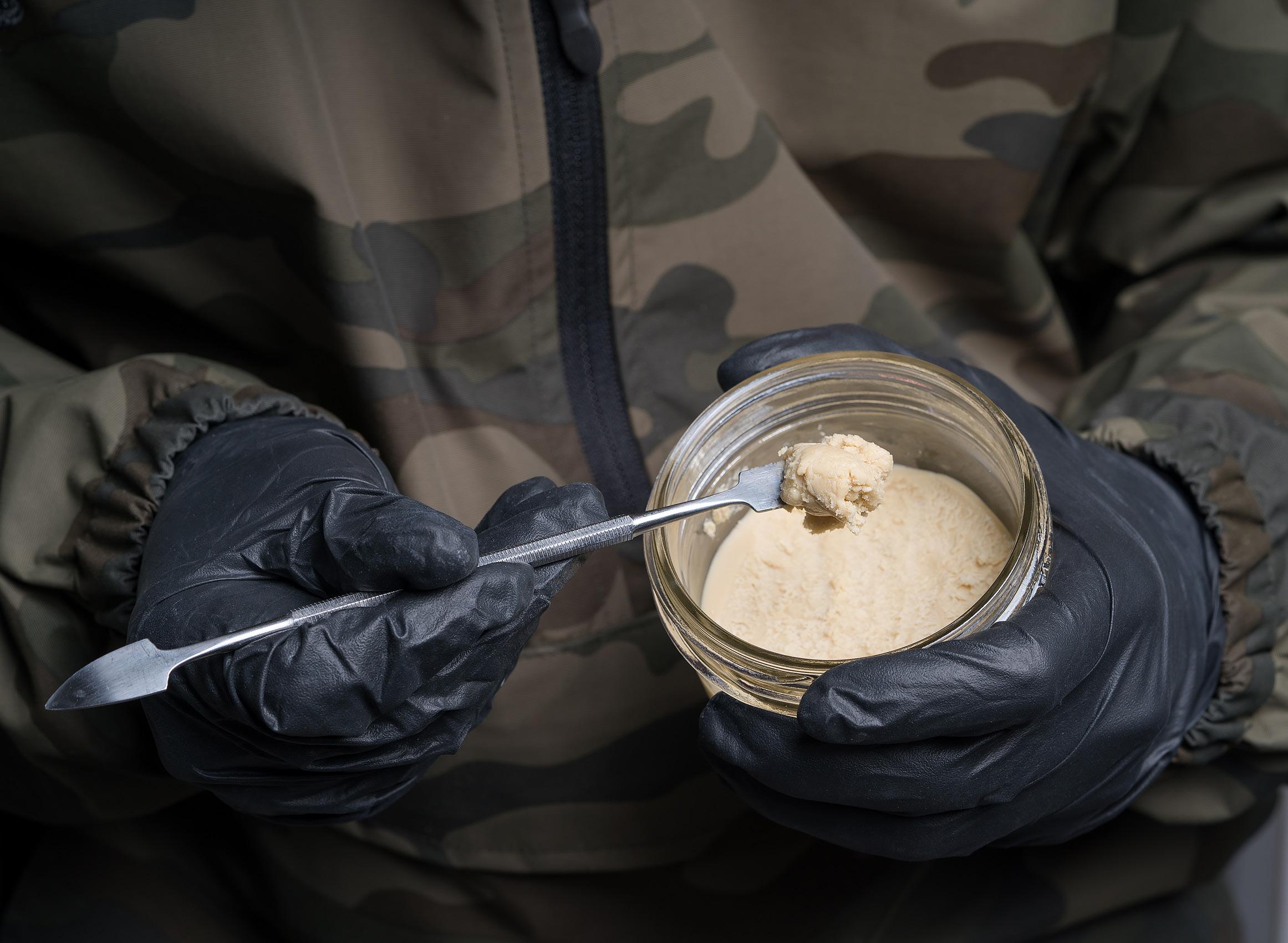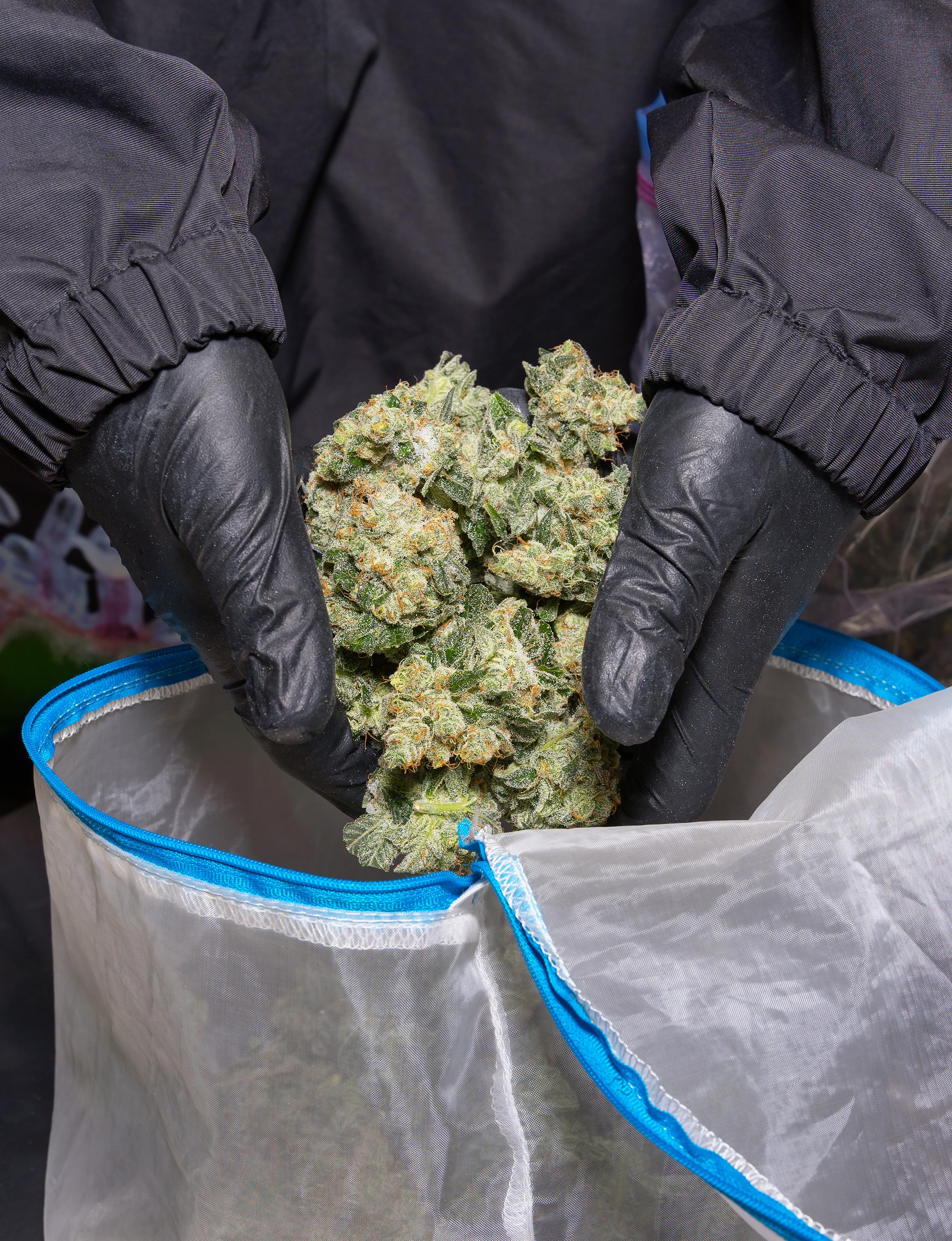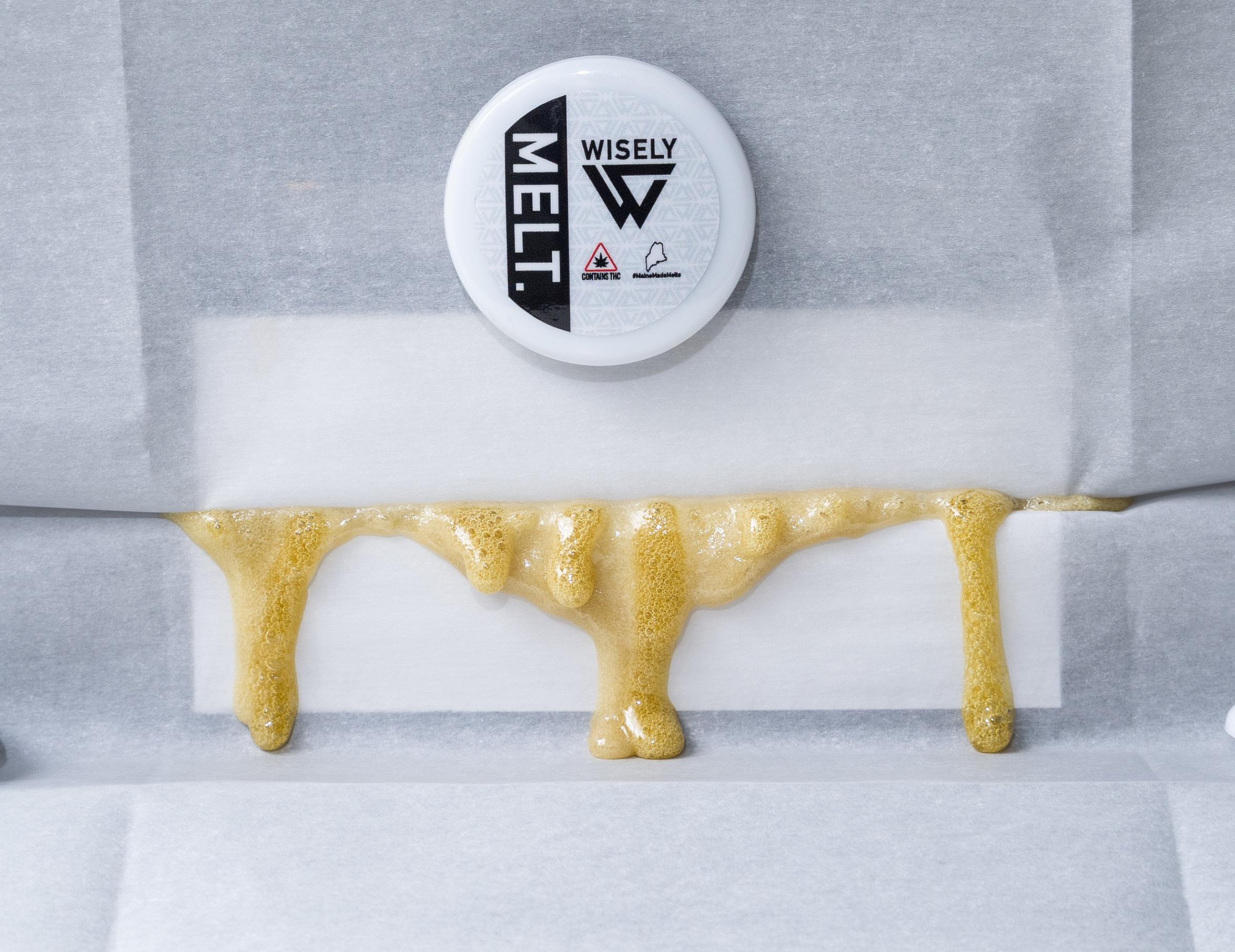
4 minute read
ROSIN:
THE MECHANICS OF MELT
PART 1 BY WISELY HASH PHOTOGRAPHY BY JON SECORD
Advertisement
What is “rosin?” Rosin is a cannabis concentrate that is created using heat and pressure to filter trichome heads from material such as cannabis flower, bubble hash, or kief. The result can be a sappy, badder, or shatter-like consistency. Rosin is one of a few cannabis products available that contains a full spectrum of cannabinoids and terpenes. As a result, the patient encounters a more “full-bodied” effect not normally found in concentrates made using solvents such as butane, propane, or hexane.
What are the main types of rosin? The past few years have brought the industry an explosion of solventless concentrates. Here are the five most popular:
Flower rosin This is a rosin created using dried/cured flower as a starting material. Of all the rosin types, flower rosin is the most likely to provide the fullest spectrum of cannabinoids and terpenes. However, given the low yields, low percentage of cannabinoids, and often unattractive color, it has become one of the least popular types of rosin among patients.
Hash rosin Hash rosin is made by using bubble hash from dried flower as a starting material. Bubble hash is created using a process in which flower is submerged in ice-cold water and agitated to remove trichome heads. The water is then filtered through mesh bags that collect the trichome heads. The heads are then dried and put under heat and pressure to create hash rosin. Hash rosin tends to have a higher concentration of cannabinoids because the initial starting material is already an extract.
Live rosin Live rosin is created with a starting material of bubble hash similar to the above; however, in this instance, the plant material is “fresh frozen” before being turned into bubble hash to preserve the terpenes and cannabinoids. “Fresh freezin” is a process of harvesting plant material and immediately freezing it until it is ready to be processed. Live rosins are frequently more potent than other rosins because freezing the material limits the degradation of terpenes and cannabinoids, leaving an attractive color, distinct flavor, and full-spectrum effect.
Sift/Kief rosin Sift or kief rosin is made using material that is collected from dry flower or trim using a screen to filter the trichome heads that have been shaken off of the flower/trim. Rosin extracted from kief generally has a similar cannabinoid content and yield to hash rosin as the material is the same with the absence of water as an agitator.

The Five Main Variables of Creating Rosin Pressing rosin is a place where art and science meet. It is not simply a process that can be repeated over and over again in precisely the same way. Becoming a master of this art means understanding the five variables of the process and how they relate to one another. The ability to synchronize these variables is the foundation of producing high-quality rosin. On the other hand, failing to take all of these factors into account can negatively impact the final product, potentially leaving you with a discolored material devoid of terpenes and flavor.

MELT
1. Starting material: The quality of a rosin is highly dependent on the quality of the starting material from which the rosin is extracted. Different strains produce differently sized and structured trichome heads. It is important to have a microscope to examine trichome heads to become familiar with the structures and sizes that produce well.
2. Time: There is no perfect recipe for pressing rosin, because the ideal duration depends on the heat and pressure levels. The heat and pressure levels are dependent on the type/ quality of the starting material. As you can see, there is a lot of harmonizing that takes place among the variables. 3. Heat: The most ideal levels of heat can vary based on the starting material; however, taking into account that the heat needs to be consistently applied and free of “hot spots” will help ensure a quality final product. Consistency is key.
4. Pressure: Similar to the heat variable, pressure should be applied consistently and free of “weak spots.” It is important to apply pressure incrementally so that the proper melting of trichome heads can take place and blowouts are avoided. “Blowouts” happen when too much pressure is applied too quickly and the plant material escapes the filter bag causing a contamination of the rosin product.
5. Micron (filter size): The filter size is an important factor because it determines how refined your rosin will be. It is important to recognize that different starting material requires different sized filters to optimize the return. Filters come in different micron sizes as well as different physical sizes. Understanding your press and starting material will help you determine how much material to put into a filter. This consideration goes a long way towards producing quality rosin.










